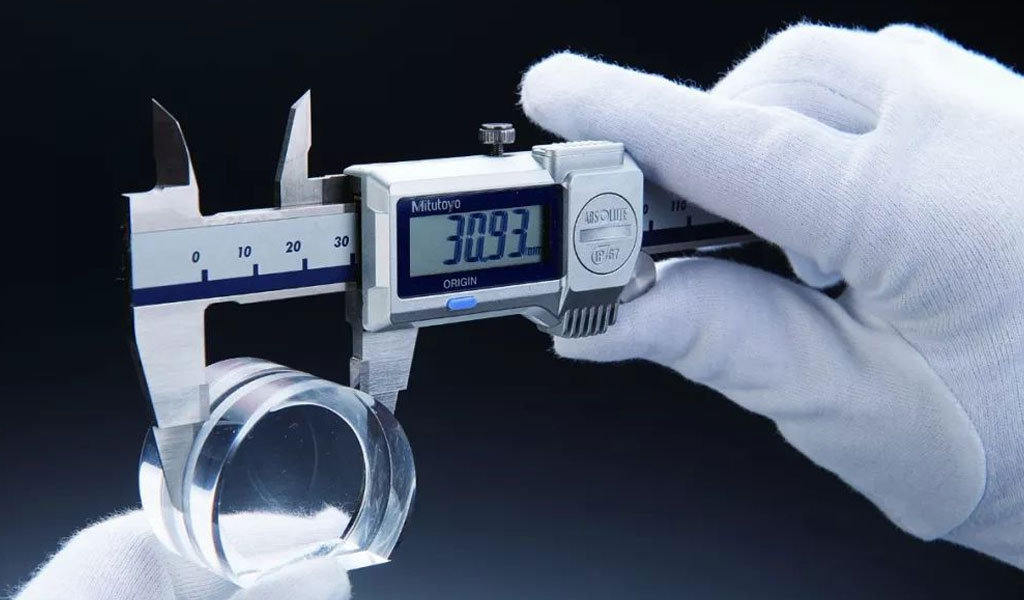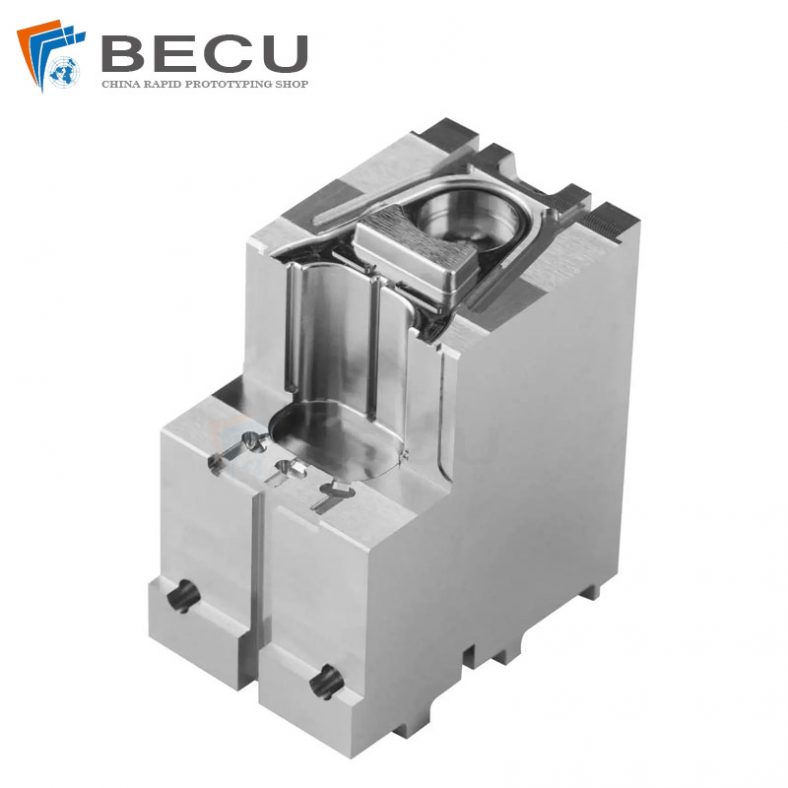Computer Numerical Control (CNC) machining has revolutionized the manufacturing industry, allowing for the creation of complex and precise parts with exceptional efficiency. However, to achieve high-quality results, understanding the concepts of precision, accuracy, and tolerance is paramount. These terms are often used interchangeably, but they have distinct meanings and implications in CNC machining. In this comprehensive guide, we will delve into the world of precision and accuracy, explore their differences, and understand the role of tolerance in CNC machining.
Our Precision CNC Machining Parts Case Studies:

Section 1: Understanding Precision
Precision refers to the degree to which a measurement or result is consistently repeatable.
In CNC machining, precision is all about achieving the same result with minimal variation when the same task is performed multiple times.
A precision machining process produces parts that meet tight specifications and maintain consistency.
Factors Influencing Precision in CNC Machining
- Machine Tools: The quality and condition of CNC machine tools play a crucial role in precision. Well-maintained machines with minimal wear and tear are more likely to produce precise parts.
- Tool Selection: The choice of cutting tools, their sharpness, and the material they are made from affect precision. Proper tool selection is critical to achieving tight tolerances.
- Fixturing and Workholding: The way a workpiece is held in place during machining can impact precision. Proper fixturing minimizes vibrations and ensures consistent results.
- Programming: CNC programs must be meticulously crafted to minimize errors. Precision in programming can lead to precision in machining.
Precision and Its Role in CNC Machining
Precision is fundamental in CNC machining for several reasons:
- Repeatability: Precision ensures that the same part can be produced consistently without significant variations.
- Quality Control: Precise machining processes result in high-quality parts that meet design specifications.
- Cost Savings: Reduced waste and fewer defective parts lead to cost savings in the long run.
- Customer Satisfaction: Consistency and accuracy are essential for meeting customer expectations.
Section 2: Understanding Accuracy
Accuracy, in the context of CNC machining, refers to how close the measured or machined result is to the true or target value. It involves minimizing systematic errors and biases in the machining process to produce parts that meet the desired specifications.
Factors Influencing Accuracy in CNC Machining
- Machine Calibration: Regular calibration of CNC machines is crucial to maintaining accuracy. It corrects any discrepancies between the machine’s intended movement and the actual movement.
- Tool Wear: Accurate results depend on sharp and well-maintained cutting tools. Worn-out tools can introduce inaccuracies into the machining process.
- Material Variations: Variations in the material properties, such as density or hardness, can affect accuracy. Proper material selection and quality control are essential.
- Environmental Factors: Temperature, humidity, and other environmental factors can influence the dimensions of the workpiece. Climate-controlled machining environments can help mitigate these effects.
Accuracy and Its Role in CNC Machining
Accuracy is a critical aspect of CNC machining for various reasons:
- Meeting Specifications: Accurate machining ensures that parts conform to design specifications and function as intended.
- Reduced Rework: Accurate parts require less rework or adjustments, saving time and resources.
- Interchangeability: Accurate parts are more likely to be interchangeable, reducing the need for custom adjustments during assembly.
- Compliance: In industries with strict regulatory requirements, accuracy is essential for compliance with standards.
Section 3: Differentiating Precision and Accuracy
In the realm of CNC machining, precision and accuracy, along with the understanding of tolerance, play a fundamental role in determining the quality and reliability of the final product. While precision underscores consistency and reproducibility, accuracy emphasizes adherence to the intended design parameters. Implementing robust quality control measures and investing in advanced machinery are crucial steps in achieving the desired precision, accuracy, and tolerance levels.
The Distinct Characteristics of Precision
- Consistency: Precision is primarily concerned with producing consistent results. A precision machining process may consistently produce parts that are slightly off target but are reliably so.
- Repeatability: Precise machining processes can replicate the same result repeatedly, even if that result is not perfectly accurate.
- Variance from Target: Precision may not necessarily result in parts that are close to the target value, but it does ensure minimal variation between parts.
The Distinct Characteristics of Accuracy
- Proximity to Target: Accuracy focuses on how close the measured or machined result is to the true target value. Accurate machining minimizes the deviation from the intended specifications.
- Systematic Error: Accuracy considers and corrects systematic errors in the machining process that lead to biases in the produced parts.
- Single Measurement vs. Multiple Measurements: Precision is about the repeatability of measurements, whereas accuracy focuses on the correctness of a single measurement.
The Interplay of Precision and Accuracy
Precision and accuracy are not mutually exclusive; they are interrelated. Achieving both is the goal of many CNC machining operations:
- Balancing Act: CNC machining processes strive to balance precision and accuracy, optimizing both to meet the requirements of the specific project.
- Iterative Improvement: Continuous monitoring, calibration, and adjustment of machining processes can help improve both precision and accuracy over time.
- Trade-Offs: There are situations where optimizing precision might come at the cost of accuracy and vice versa. Understanding the trade-offs is essential.
Section 4: The Role of Tolerance in CNC Machining
Tolerance, in the context of CNC machining, refers to the allowable variation in a part’s dimensions or specifications. It is the range within which a part can deviate from its intended design while still being considered acceptable. Tolerance is a critical factor in manufacturing, as it defines the acceptable limits of precision and accuracy.
Types of Tolerances
- Geometric Tolerance: Specifies the allowable variations in shape, size, and orientation of features on a part. Common geometric tolerances include concentricity, parallelism, and perpendicularity.
- Dimensional Tolerance: Defines the acceptable deviation from specified dimensions, such as length, width, or height.
- Positional Tolerance: Governs the allowable variations in the location of features in relation to each other or a reference point.
- Form Tolerance: Addresses variations in the form or profile of a feature, ensuring that it conforms to the intended shape.
Tolerance Stack-Up
In complex assemblies, parts often interact with each other. Tolerance stack-up is the cumulative effect of tolerance variations in multiple parts, which can lead to assembly issues. Managing tolerance stack-up is crucial to achieving the desired precision and accuracy in the final assembly.
Importance of Tolerance in CNC Machining
- Quality Assurance: Tolerance allows manufacturers to define acceptable limits, ensuring that parts remain within functional specifications.
- Interchangeability: Tolerances enable interchangeable parts, which is essential in mass production and assembly processes.
- Cost Control: Tolerance defines the necessary precision and accuracy, allowing manufacturers to control costs while meeting quality standards.
- Design Flexibility: Tolerance accommodates design changes and variations in materials without compromising functionality.
Section 5: Strategies for Achieving Precision and Accuracy in CNC Machining
The success of any machining operation hinges on the ability to consistently produce parts that adhere to strict tolerances and meet design specifications. To attain high levels of precision and accuracy, CNC machining requires a combination of advanced technology, meticulous planning, and skilled personnel.
Calibration and Maintenance
Regular calibration and maintenance of CNC machines are fundamental to achieving precision and accuracy. This includes:
- Machine Calibration: Ensuring that the machine’s movements align accurately with the programmed instructions.
- Tool Maintenance: Regularly inspecting and replacing cutting tools to maintain sharpness and accuracy.
- Environmental Control: Maintaining stable environmental conditions to minimize variations in the machining process.
Advanced Machining Techniques
Advanced machining techniques, such as high-speed machining and multi-axis machining, can enhance precision and accuracy(metal and plastics,as Torlon Plastics CNC Machining). These techniques enable smoother cuts, reduced vibrations, and improved surface finishes.
Process Monitoring and Feedback
Real-time monitoring of machining processes allows for immediate adjustments. Feedback systems can detect variations and correct for them during machining, leading to more accurate results.
Material Selection and Quality Control
Selecting high-quality materials and implementing rigorous quality control processes help ensure the accuracy and consistency of machined parts.
Iterative Improvement
Continuously evaluating and improving machining processes is essential. Root cause analysis of errors and inefficiencies can lead to long-term enhancements in precision and accuracy.
Section 6: The Relationship Chart Between Accuracy, Precision and Tolerance
| Criteria | Definition | Similarities | Differences | Relationship |
|---|---|---|---|---|
| Accuracy | Closeness of a measurement to the true value or target value | Both accuracy and precision aim for reliable measurements and products | Accuracy emphasizes correctness; it’s about being close to the true value. | Tolerance sets acceptable limits for accuracy. Maintaining measurements within the tolerance range ensures accuracy. |
| Precision | Consistency and reproducibility of measurements or outcomes | Both accuracy and precision seek consistency in results. | Precision focuses on tight clustering of measurements but doesn’t necessarily ensure accuracy. | Tolerance defines the allowable spread within which precision must be maintained. |
| Tolerance | Permissible deviation from a specified dimension or value | Tolerance is a common factor in both accuracy and precision. | Tolerance is a specification for acceptable limits, not a measure of closeness. | Tolerance sets boundaries for accuracy and specifies the range within which precision must be maintained. |
Section 7: Conclusion
Understanding the fundamental differences between precision and accuracy and their role in CNC machining is essential for achieving high-quality results. Tolerance acts as a guiding factor, allowing manufacturers to define acceptable limits while considering the trade-offs between precision and accuracy. Implementing calibration, maintenance, advanced techniques, monitoring, and quality control processes are key to achieving precision and accuracy in CNC machining.
The real-world applications of CNC machining highlight the critical nature of these principles in various industries. As technology advances and the demand for precision and accuracy grows, CNC machining will continue to play a pivotal role in shaping the future of manufacturing.
In the ever-evolving world of CNC machining, the quest for precision and accuracy remains a driving force behind innovation and excellence. Balancing these two critical aspects is an ongoing challenge, but it is a challenge that CNC machinists are more than capable of meeting.
By mastering precision and accuracy, CNC machining can continue to shape industries, drive innovation, and provide the high-quality products we rely on in our daily lives.




